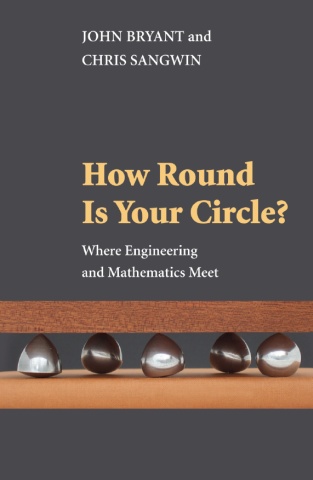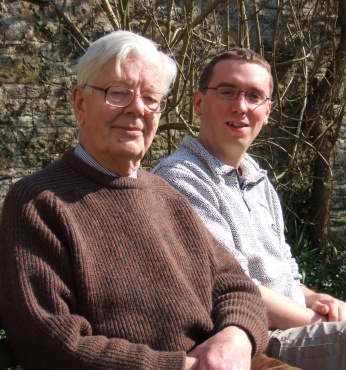
How round is your circle? : where engineering and mathematics meet.
John Bryant and Chris Sangwin
Princeton University Press, 2008. ISBN: 978-0-691-13118-4
You can order online from amazon.co.uk, or amazon.com.

Truly impressive. This book builds a bridge across the ordinarily huge chasm
separating how engineers and mathematicians view the world. Its innovative
approach will be refreshing to readers with an engineering bent, and an eyeopener
for many mathematicians. The audience for this book includes just
about anyone who has any curiosity at all about how mathematics helps in
explaining the world.
Paul J. Nahin, author of An Imaginary Tale.
I learned a lot from this book. I think it will have wide appeal, including with
those readers who are interested in mathematics and those who are interested
in building models. I was up until midnight the other night making a hatchet
planimeter out of a coat hanger and washers!
David Richeson, Dickinson College.
This book is a mine of exploration and information. I would recommend it to
anyone with an interest in how things work and in how mathematics can help
make sense of the world. Budding engineers and mathematicians will find it an
inspiration.
John Mason, The Open University, United Kingdom.

How do you draw a straight line? How do you determine if a circle is really round? These may sound like simple or even trivial mathematical problems, but to an engineer the answers can mean the difference between success and failure. How Round Is Your Circle? invites readers to explore many of the same fundamental questions that working engineers deal with every day—it’s challenging, hands-on, and fun. John Bryant and Chris Sangwin illustrate how physical models are created from abstract mathematical ones. Using elementary geometry and trigonometry, they guide readers through paper-and-pencil reconstructions of mathematical problems and show them how to construct actual physical models themselves—directions included. It’s an effective and entertaining way to explain how applied mathematics and engineering work together to solve problems, everything from keeping a piston aligned in its cylinder to ensuring that automotive driveshafts rotate smoothly. Intriguingly, checking the roundness of a manufactured object is a trickier proposition than one might think. When does the width of a saw blade matter to an engineer’s calculations—or for that matter, the width of a physical line? When does a measurement need to be exact and when will an approximation suffice? Bryant and Sangwin tackle questions like these and enliven their discussions with many fascinating highlights from engineering history. Generously illustrated, How Round Is Your Circle? reveals some of the hidden complexities in everyday things.